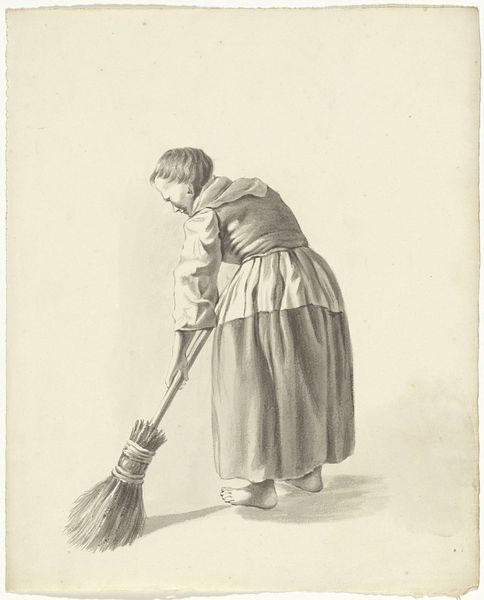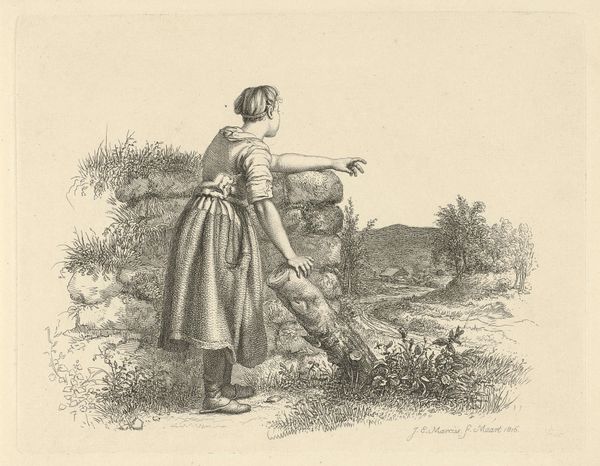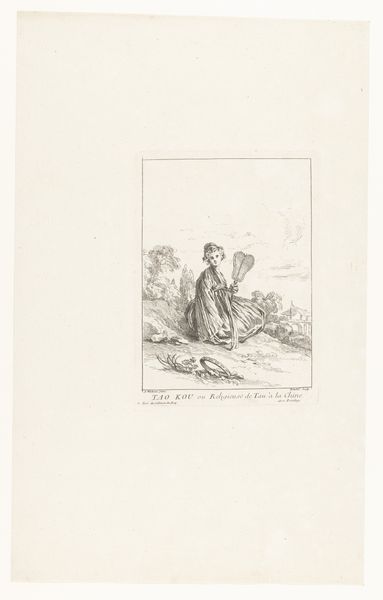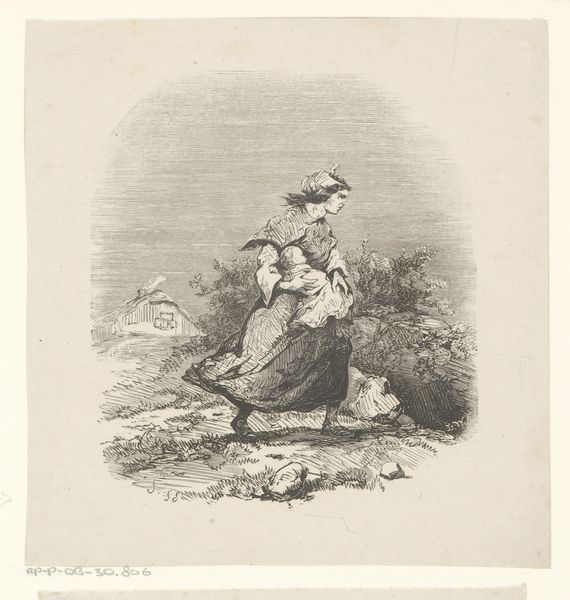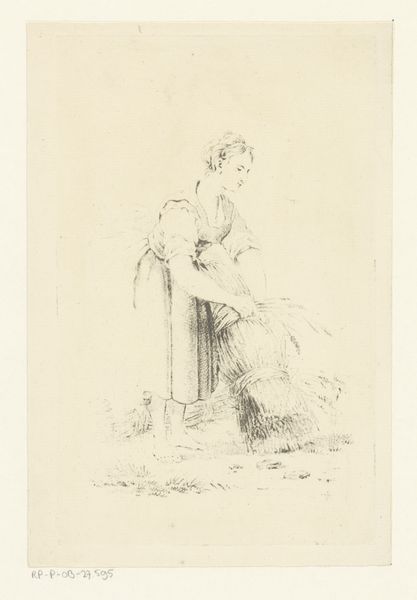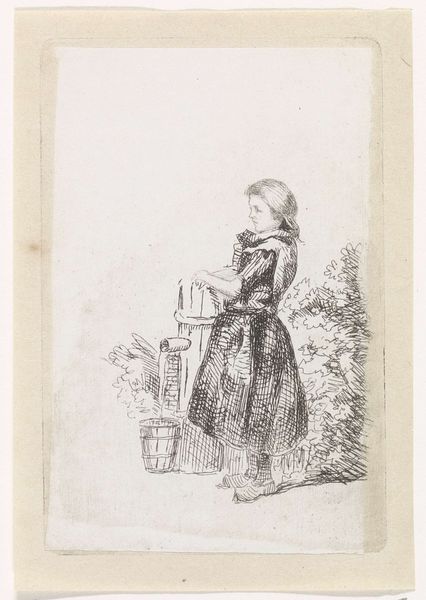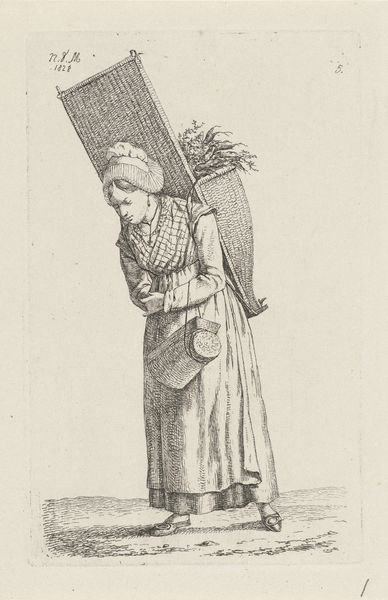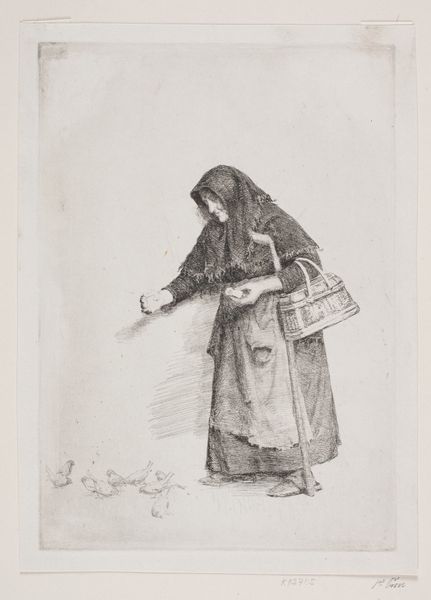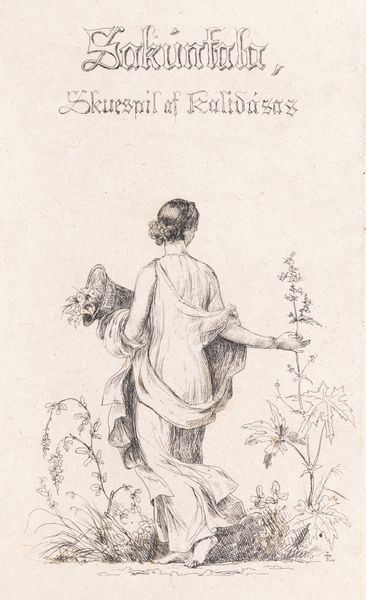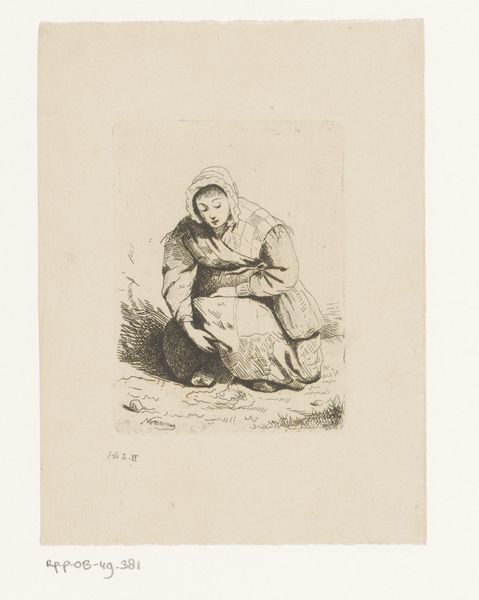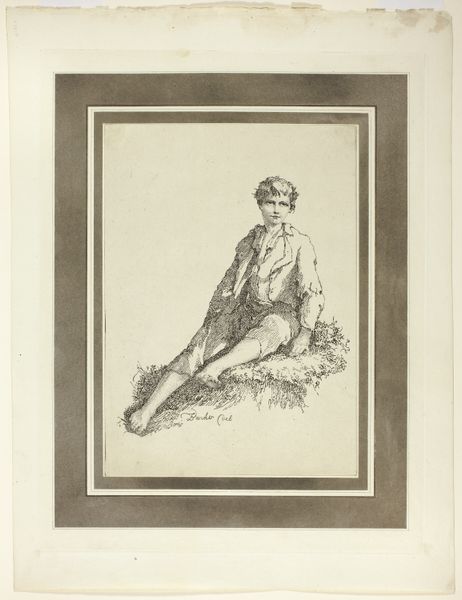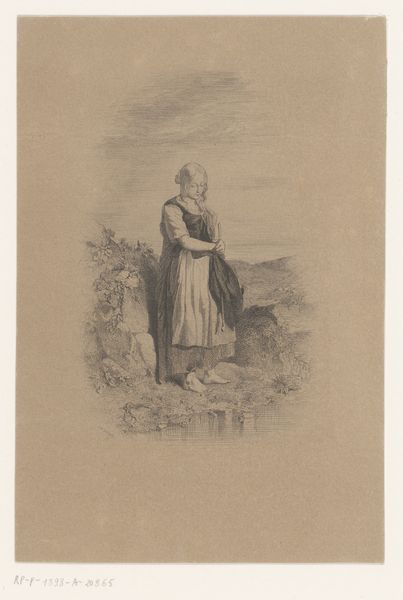
drawing, pencil
#
portrait
#
drawing
#
pencil sketch
#
landscape
#
figuration
#
plant
#
pencil
#
realism
Dimensions: height 193 mm, width 126 mm
Copyright: Rijks Museum: Open Domain
Editor: So, this is "Woman with a Sheaf of Wheat" by Pieter Bartholomeusz. Barbiers, a pencil drawing from around 1809 to 1837. It’s currently housed at the Rijksmuseum. I find its simplicity quite captivating. The woman seems grounded, almost stoic in her labor. What stands out to you when you look at it? Curator: Immediately, I am drawn to the intricate play of lines and the balance of light and shadow. Note how Barbiers uses hatching to define the form of the woman's dress and the sheaf itself. What impact do you believe that choice has on the viewer? Editor: It makes the figures feel solid, weighty even, despite it only being a pencil drawing. You can feel the texture. Curator: Precisely. Furthermore, consider the composition. The woman occupies a central position, yet the artist avoids symmetry. The wheat provides a counterpoint, creating a dynamic tension. What semiotic significance might we ascribe to the positioning of the sheaf, obscuring a part of the woman's lower body? Editor: Perhaps it symbolizes the burden of her work? The wheat is literally and figuratively weighing her down. The simplicity emphasizes the universal experience of labor. Curator: An interesting consideration. Now, consider the formal relationship between the figure and the ground. What is your assessment of how the artist employed the use of negative space here? Editor: There isn't much detail in the background, which focuses our attention entirely on the woman and the sheaf, simplifying it down to form. Curator: Precisely, the emphasis is clearly on the intrinsic visual elements. I appreciate how you synthesized your observations and articulated meaning using formal analysis. Editor: Thank you. Examining its structural elements certainly revealed new dimensions to appreciate in this piece.
Comments
No comments
Be the first to comment and join the conversation on the ultimate creative platform.
